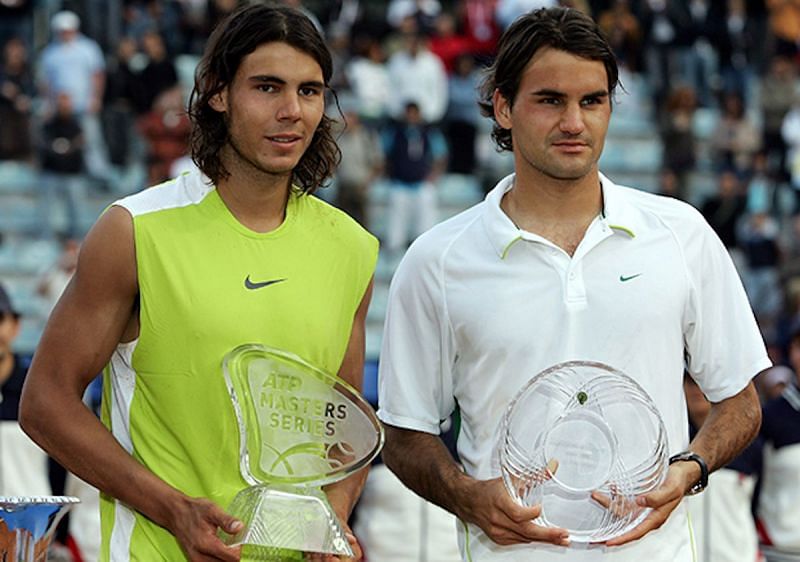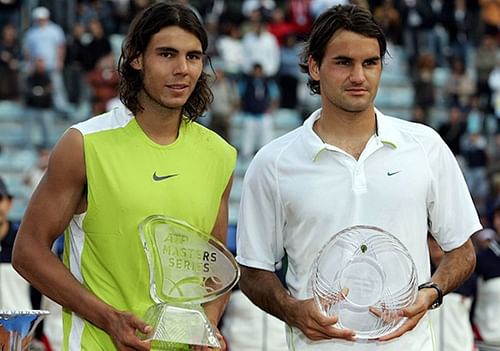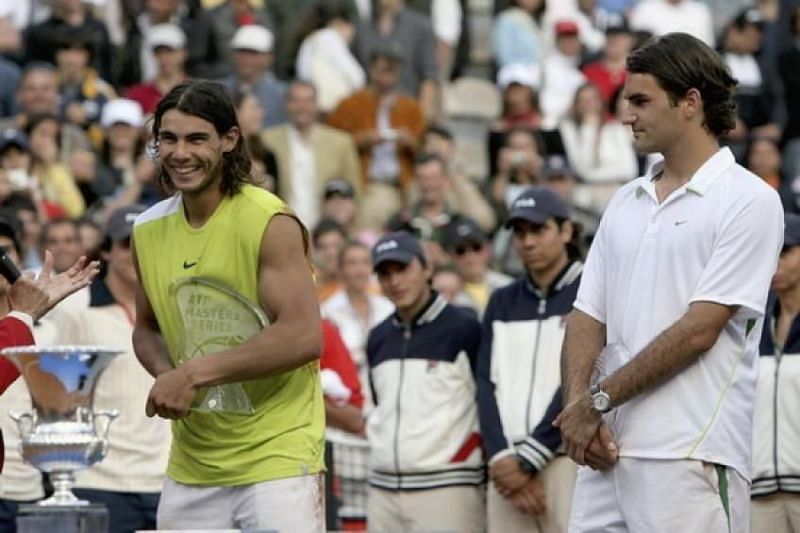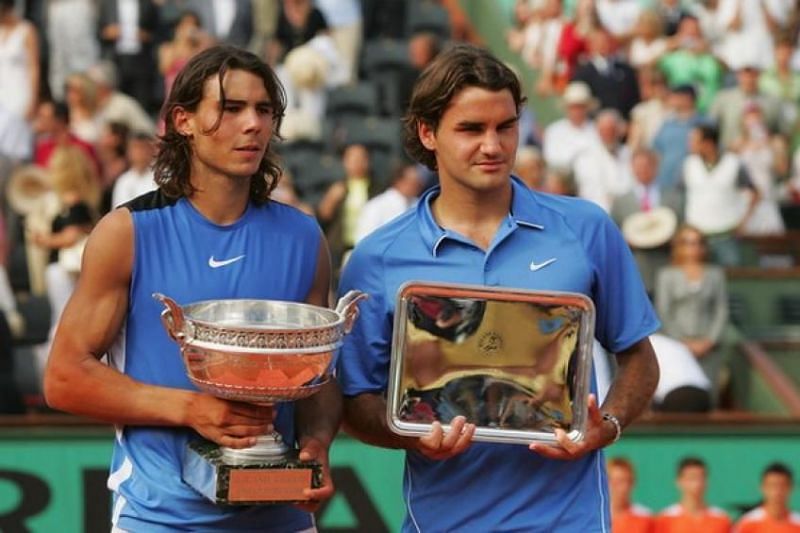
Rafael Nadal beats Roger Federer in epic Rome 2006 final: This day, that year

On this day in 2006, Rafael Nadal beat then World No. 1 Roger Federer in an enthralling Rome Masters final to become the youngest player to successfully defend a Masters 1000 title. The match, which lasted a staggering five hours five minutes, marked the moment when the 'Fedal' rivalry ascended to a different plane altogether.
In many ways, the Rome final - together with the 2008 Wimbledon final - defined the 2000s decade in men's tennis. It's been 14 years since that landmark match, but the effects of it are still being felt in the tennis world.
After falling to Rafael Nadal in the Dubai and Monte Carlo Masters finals earlier in the season, Roger Federer met the Spaniard for the third time in 2006 with another title on the line - the Rome Masters. The Swiss was looking for his first title in the Italian capital, having fallen just short in the 2003 final against Felix Mantilla.
Roger Federer had lost to the Spanish teenager in the 2005 Roland Garros semifinal and the 2006 Monte Carlo final, and was starting to show the first signs of weakness in his reign of dominance. The then 24-year-old was determined to break his duck on clay against Rafael Nadal, and he started the Rome final in a positive frame of mind.
Federer assumed control of the match by taking the opening set on a tie-break, where he conceded no point. However, Rafael Nadal evened the contest by grabbing the second set on another tie-break, before taking a two sets to one lead.
The World No. 1 fought back to reclaim his ascendancy, dropping just two games in the fourth and then leading by a break in the decider. Even though Rafael Nadal got back on serve, Federer had two championship points on the Spaniard's serve at 5-6 15-40.
However, two errant forehands arrived at the most inopportune moment possible to deny the Swiss the result he craved.
In the ensuing tie-break, Roger Federer led by a mini-break and could have opened up a 5-2 lead with two serves to come. But the 24-year-old pulled the trigger early, and a forehand failed to land inside the court.
Rafael Nadal made full use of the reprieves, taking four of the next five points to win his sixth Masters 1000 title from seven finals. In the process, he also became the first teenager to win consecutive Masters 1000 titles at the same tournament.
How did Rafael Nadal keep Roger Federer at bay for over 5 hours?

Bidding to lift his first title in the Italian capital, Federer dictated points with regular net approaches. The then-World No. 1 won more points than Rafael Nadal (179 to 174) in the contest, but it was the 19-year-old who came out on top when it mattered most.
Both players were evenly matched in return points won, with Nadal winning 33% to Federer's 34%. The Spaniard also had marginally inferior numbers in service points won; Nadal won 66% of his points on serve as opposed to Federer's 67%.
As is usually the case in a Nadal win on clay, the Spaniard defended his second delivery with gusto. He won an impressive 54% of his second serves, with the corresponding number for Federer being 51%.
But it was surprisingly on the first serve that Nadal created daylight between himself and the world's top-ranked player. The Spaniard landed a stunning 85% of his first serves in play, including one on championship point down in the fourth set, which was significantly better than Federer's 62%. That proved decisive in the eventual scheme of things.
The baseline rallies were fairly even, with Federer matching Nadal sprint for sprint throughout the contest. Federer's foot-speed at 24 was considerably higher than it is now, and his defense in the Rome final was perhaps the best of his career. Where Federer paid the price was in his refusal to match Nadal's patience; he often looked to pull the trigger earlier than he should have, while the Spaniard kept playing within himself and sending balls back tirelessly.
Eventually Federer ended up missing a few too many big shots on important points; he wasn't physically outlasted by Nadal as much as he was mentally worn down. And that set a pattern for the rivalry that would hold good for the next full decade: Nadal always playing inside his comfort zone, Federer always being too eager to grab control, and the Spaniard eventually winning.
How the 2006 Rome win set Rafael Nadal on a path of dominance

With his Rome win, Rafael Nadal tied Guillermo Vilas’ Open Era record of 53 consecutive match wins on the red dirt, even as he improved his tour-level finals record to a stunning 16-2. Federer, on the other hand, left the Italian capital that year with a 39-3 record - with all three losses coming against Nadal.
Rafael Nadal produced one of the best seasons in the Open Era in 2006. After handing Australian Open champion Federer his first loss of the year in Dubai, Nadal truly his stride on European clay. The then teenager swept all four clay titles on offer, beating Federer in the finals at Monte Carlo, Rome and Roland Garros.
With his Roland Garros triumph, Nadal became the first teenager in two decades (since Boris Becker at Wimbledon 1986) to successfully defend a Grand Slam title.
The left-hander then made a surprise run to the Wimbledon final, and challenged Federer on the latter's home turf before falling short in four sets. Nadal won the third set of the final in a tiebreak, which marked the only set the Swiss lost at SW19 that year.
Two years later, Nadal wouldn't fall short. He beat the Swiss great in a match that many believe is the greatest in tennis history, and soon after that won the Olympics gold medal and the Australian Open trophy too.
Rafael Nadal usurped everything from Roger Federer bit by bit - Wimbledon, the No. 1 ranking, the dominance over the tour - and it all started with that epic 2006 afternoon in Rome.